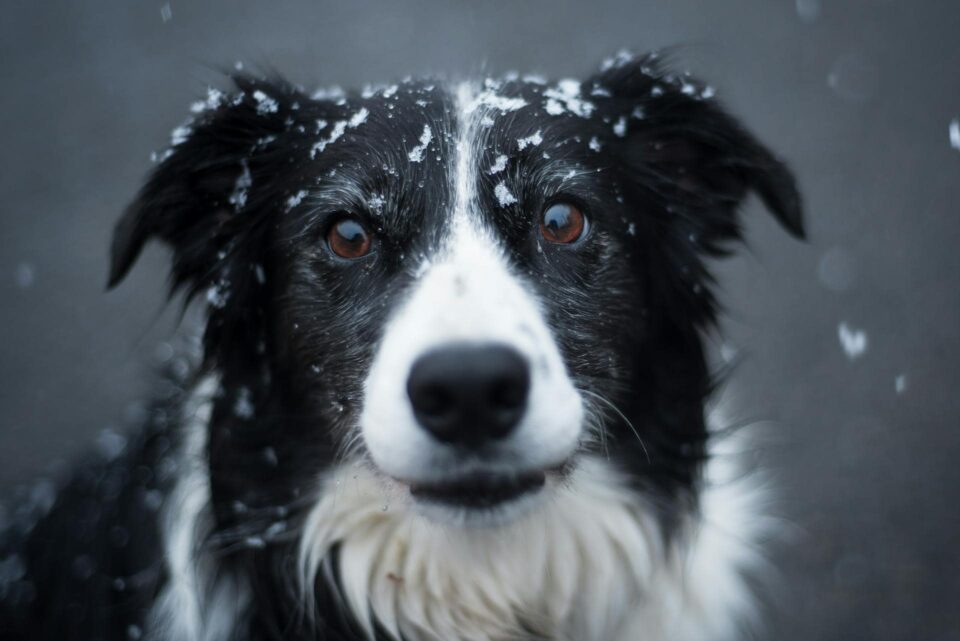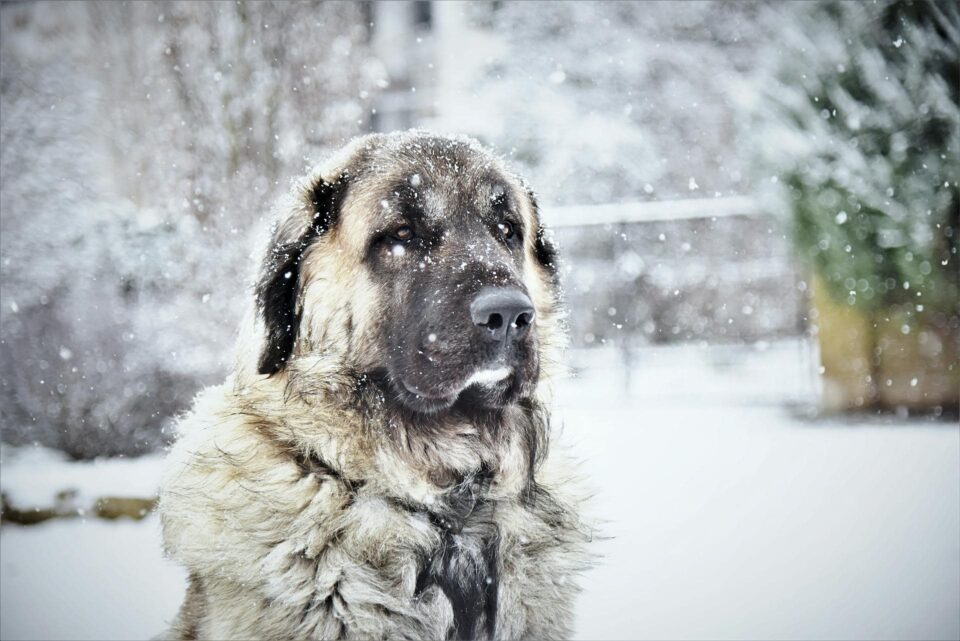Cold Safety: Can Dogs Get Frostbite?
Winter weather can be tough on everyone, including your dog. With freezing temperatures and icy conditions, it’s natural to wonder: can dogs get frostbite?
Frostbite happens when cold exposure causes tissues to freeze, and it can affect dogs just as it does humans. Here’s a closer look at how frostbite impacts dogs and ways to keep your pet safe from the cold.
Key Takeaways
- Dogs are at risk of frostbite during prolonged exposure to freezing temperatures.
- Frostbite commonly affects extremities like paws, ears, and tails.
- Keep outdoor time short in cold weather to reduce frostbite risks.
- Use protective gear like booties and coats for added warmth.
- Regularly inspect your dog’s skin and paws after outdoor activities.
What Is Frostbite in Dogs?
Frostbite happens when a dog’s body redirects blood flow from extremities to vital organs to stay warm.
This reduced blood flow can cause tissues in areas like paws, ears, and tails to freeze. The damage may not be immediately visible, but it can lead to serious issues if untreated.
Dogs with thin coats or those not accustomed to cold weather are especially vulnerable. Knowing the warning signs can help you act quickly and keep your dog safe. Learn more about the signs and how to address them from trusted resources like frostbite in dogs.
How Does Frostbite Happen?
1. Exposure to Extreme Cold
Prolonged exposure to freezing temperatures increases the risk of frostbite. Dogs left outside for too long, especially in windy conditions, are at higher risk.
Wind chill can make cold weather even more dangerous by speeding up heat loss. Even a few minutes outside in harsh conditions can be harmful for some dogs.
2. Wet or Damp Fur
Wet fur loses its insulating properties, making it easier for your dog’s body temperature to drop. After a walk in the snow, dry your dog’s fur thoroughly to keep them warm.
Snow or ice stuck to their coat can make them colder faster, especially if it melts and soaks through. Pay extra attention to areas like their belly and legs, which are closer to the ground.
3. Lack of Protection
Dogs without protective gear like booties or coats may suffer frostbite on their paws or other exposed areas. Thin or short-haired breeds are particularly at risk.
Even breeds with thicker coats may need extra protection when temperatures drop significantly. Using warm, insulated gear can help keep them comfortable and safe during winter outings.

Recognizing Frostbite in Dogs
Frostbite symptoms in dogs can range from mild to severe, depending on how long they’ve been exposed to the cold. It most often affects extremities like their paws, ears, and tail, which are more vulnerable to freezing temperatures. Look out for these signs:
- Skin discoloration: Affected areas may appear pale, gray, or bluish.
- Cold, hard, or brittle skin: These changes suggest tissue damage from prolonged cold exposure.
- Swelling or blisters: These may develop on areas exposed to extreme cold.
- Pain or discomfort when touched: Your dog may flinch or pull away when frostbitten areas are handled.
If you think your dog might have frostbite, take action right away. Bring them to a dry, warm spot and carefully warm the frostbitten areas with a towel or lukewarm water. Avoid using direct heat, as it could make the injury worse.
Monitor your dog closely for additional signs of distress and contact your vet for professional guidance. Frostbite can lead to complications if not addressed quickly, so early care is essential to protect your dog’s health and comfort.
How to Protect Your Dog from Frostbite
1. Limit Outdoor Time
Short walks during extremely cold weather are safer than extended outdoor activities. Watch for signs that your dog is getting too cold, like shivering or hesitating to walk. If your dog won’t walk outside, it may be due to discomfort from the cold.
2. Use Protective Gear
Booties can shield your dog’s paws from ice and snow, reducing the risk of frostbite. Coats or sweaters can also provide extra insulation for their body.
3. Check Paws Regularly
Inspect your dog’s paws for signs of damage or ice buildup. If your dog’s paws get frostbite, wash them with warm water and dry them thoroughly.
Related: Pamper Your Pet
Safe Winter Habits for Dogs
1. Create a Warm Resting Spot
Make sure your dog has a warm, draft-free space indoors to rest after outdoor activities. A cozy bed or blanket can help them recover and stay comfortable.
2. Hydration Matters
Cold weather can make it easy to overlook hydration, but water is essential for your dog’s health. Frozen water bowls can discourage drinking, so check their water supply regularly.
3. Watch for Behavior Changes
If your dog has stinky feet or hesitates during outdoor trips, it could be a sign they’re too cold or uncomfortable. Adjust their outdoor time and keep an eye on their behavior.
Products That Can Help
Holistic products, like Gou Gou Pets’ Dog Paw Ointment, can soothe and protect your dog’s paws from winter dryness and irritation. Using products with natural ingredients can support your dog’s skin and maintain its health during harsh weather.
Additionally, calming sprays or diffusers can create a stress-free environment for dogs that are sensitive to seasonal changes.

Why Some Dogs Are More Vulnerable
Certain breeds and conditions make some dogs more prone to frostbite than others. Thin-coated breeds like Greyhounds or Chihuahuas lack the natural insulation of thicker-coated breeds. Puppies, senior dogs, and those with health issues may also struggle to regulate their body temperature.
If your dog’s paws are exposed to snow or ice frequently, take steps to protect your dog from frostbite. Preventive care is key to ensuring they stay safe during winter.
Recognizing Severe Conditions
In extreme cases, frostbite can lead to tissue damage that requires medical attention. Severe frostbite can result in infection or even the need for amputation. If you notice signs like persistent swelling, blackened skin, or worsening pain, consult a vet immediately.
For more details on how dogs get frostbite, check out resources from trusted experts like the AKC and PetMD.
Protect your dog’s paws this winter with Gou Gou Pets’ Dog Paw Ointment. It’s designed to soothe and care for paws exposed to harsh winter conditions.
Conclusion
Yes, dogs can get frostbite, but with the right precautions, you can keep them safe and comfortable during winter. Limit outdoor time, use protective gear, and regularly inspect their paws and skin. By staying vigilant, you can enjoy the season while keeping your furry friend healthy and happy.
~Veterinarian Recommended